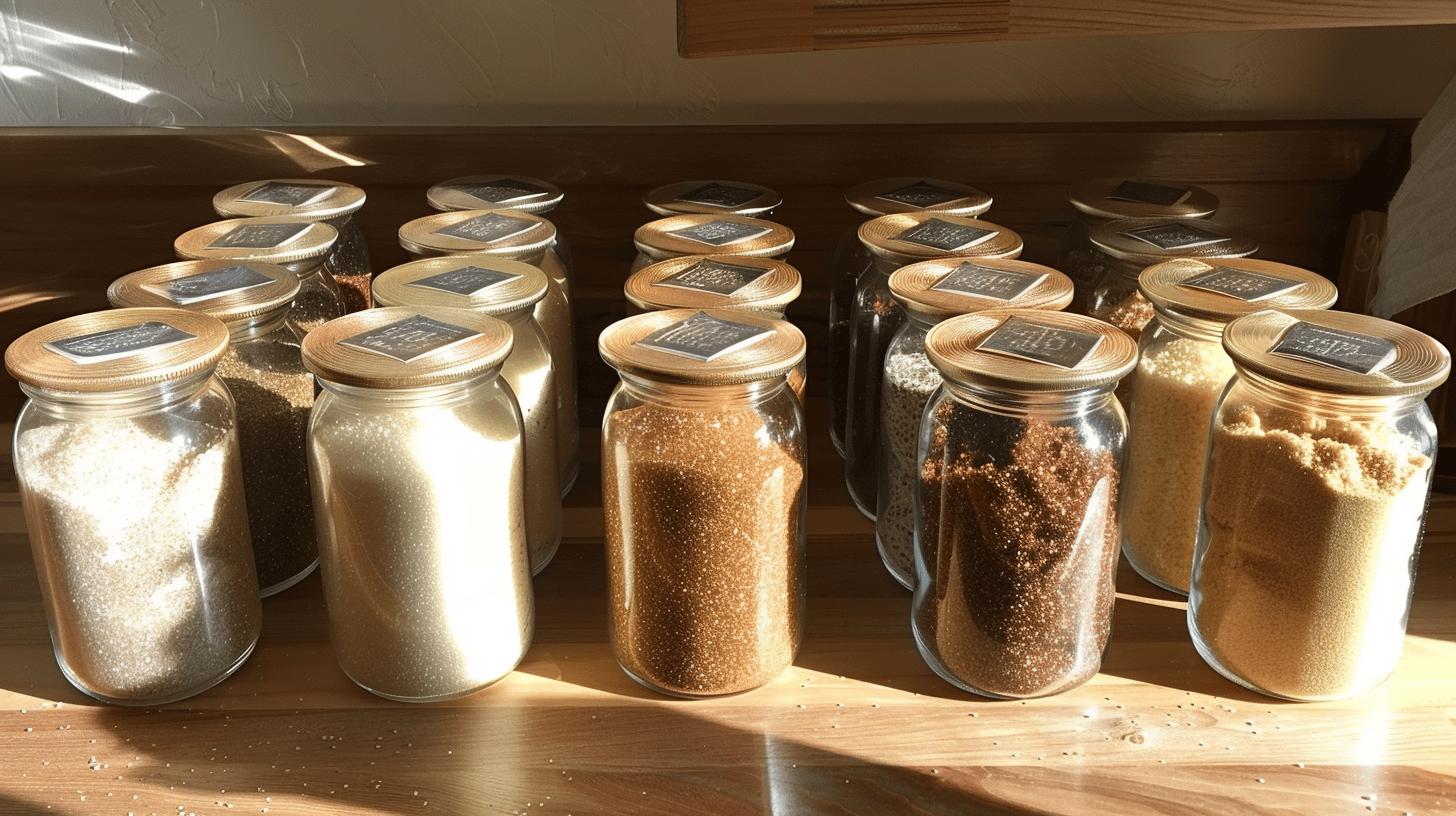What makes sugar granules more than just a sweet addition to your recipes? The answer lies in their grades. Understanding the different sugar grades is crucial, especially for large-scale food and beverage manufacturers. These grades, classified by qualities such as crystal size, color, and purity, determine the suitability of sugar for various applications. This article breaks down the sugar grading system, helping you grasp the importance of selecting the right grade for your specific needs, thereby ensuring consistent product quality and efficient supply chain management.
Understanding Sugar Grades

Sugar grades are classifications based on specific qualities such as crystal size, color, and purity. These grades are crucial in determining the suitability of sugar for various applications, from culinary uses to industrial processes. High-quality sugars exhibit consistent crystal sizes, minimal impurities, and a uniform color, ensuring optimal performance and product consistency. The grading system allows manufacturers to select the most appropriate type of sugar for their needs, enhancing the final product’s quality and consumer satisfaction. Quality standards for sugar include several critical factors, such as moisture content and granule size. Purity levels are paramount; higher purity means fewer impurities and a more refined product. Consistent crystal sizes result in a uniform texture and appearance, which is essential for many food products. Moisture content impacts the storage and shelf life of sugar, with lower moisture levels generally preferred for longer shelf stability. | Factor | Description | |—————-|————————————————–| | Purity | Higher purity results in fewer impurities | | Crystal Size | Consistent sizes ensure uniform texture and use | | Color | Uniform color indicates high quality | | Moisture Content| Affects storage and shelf life |
Types of Sugar Grades

Granulated sugar is one of the most common sugar types, known for its versatility in both cooking and baking. It features medium-sized crystals and a pure white color, making it ideal for a wide range of culinary applications. Granulated sugar is often used to sweeten beverages, create syrups, and provide structure in baked goods. Its consistent texture ensures even distribution, making it a staple in kitchens and manufacturing processes. Powdered sugar, also known as confectioners’ sugar, is finely ground and usually has added cornstarch to prevent clumping. This sugar grade is primarily used in icings, frostings, and dusting desserts. Its ultra-fine texture allows it to dissolve quickly, providing a smooth and glossy finish to various confections. Powdered sugar is essential for creating delicate and visually appealing dessert decorations. Brown sugar is unique due to its molasses content, which gives it a moist texture and a rich, caramel-like flavor. It is available in light and dark varieties, with the darker version containing more molasses. Brown sugar is commonly used in baking to enhance the flavor and moisture of cookies, cakes, and bread. It is also a popular choice for making sauces and glazes, where its deep flavor can shine through. Raw sugar, including types like turbinado and demerara, is minimally processed and retains some of the natural molasses. This results in a coarse texture and a light brown color. Raw sugar is often used as a topping for baked goods, adding a crunchy texture and a hint of molasses flavor. Its minimal processing also makes it a preferred choice for specialty beverages and artisanal food products. Caster sugar, also known as superfine sugar, has a quick-dissolving nature, making it ideal for delicate desserts such as meringues and custards. The fine granules of caster sugar allow it to incorporate seamlessly into batters and doughs, ensuring a smooth and uniform texture. Its ability to dissolve rapidly makes it perfect for recipes that require a light and airy consistency.
Comparing Sugar Grades for Different Applications

Selecting the right sugar grade is vital for achieving the desired texture, flavor, and appearance in culinary applications. Different sugar grades offer unique properties that can significantly impact the final product. For instance, granulated sugar is commonly used for general baking and sweetening because of its medium-sized crystals, which dissolve evenly and provide consistent sweetness. On the other hand, powdered sugar is finely ground and often contains cornstarch, making it ideal for providing a smooth finish on frostings and for dusting desserts. Brown sugar, with its molasses content, adds moisture and depth to baked goods, while raw sugar’s coarse texture offers a crunchy topping for pastries and baked items. In baking, granulated sugar is typically preferred for its ability to dissolve uniformly, providing consistent structure and sweetness. It is particularly effective in recipes requiring a stable sugar that can withstand high temperatures, such as in cakes and cookies. Powdered sugar is indispensable for creating smooth and glossy frostings and dusting confections, where its fine texture ensures a seamless blend. Brown sugar is favored for its moisture-retaining properties and rich, caramel-like flavor, enhancing the taste and texture of cookies, muffins, and bread. When it comes to cooking, each sugar grade has specific applications that maximize its unique characteristics. For example, raw sugar, with its natural molasses content and coarse crystals, is excellent for adding a crunchy texture to toppings and specialty beverages. Caster sugar, known for its quick-dissolving nature, is perfect for delicate desserts like custards and meringues, where a smooth consistency is crucial.
- Frostings – Powdered sugar
- Cookies – Brown sugar
- Cakes – Granulated sugar
- Toppings – Raw sugar
- Custards – Caster sugar
Industrial Uses of Different Sugar Grades

Granulated sugar is a staple in food manufacturing and beverage production due to its consistent crystal size and high purity. It is the primary sweetener in numerous products, including soft drinks, baked goods, and sauces. Its ability to dissolve evenly and maintain stability under various processing conditions makes it an indispensable ingredient in large-scale food production. Additionally, powdered sugar plays a crucial role in the confectionery industry. Its fine texture and added cornstarch prevent clumping, making it ideal for coatings, fillings, and dusting. This ensures a smooth and refined finish, essential for high-quality confections. Brown sugar and raw sugar have distinct applications in industrial contexts. Brown sugar, with its rich molasses content, imparts a deep, caramel-like flavor and moisture to sauces and marinades. This makes it a preferred choice for products requiring a robust taste profile and enhanced texture. Raw sugar, such as turbinado and demerara, is favored in specialty beverages for its natural molasses content, which adds a unique flavor and coarse texture. Its minimal processing aligns with the growing consumer demand for less refined, more natural ingredients in artisanal and specialty foods.
- Beverage production – Granulated sugar
- Confectionery coatings – Powdered sugar
- Marinades – Brown sugar
- Specialty beverages – Raw sugar
Factors Affecting Sugar Quality and Grades

Purity is a critical factor in determining sugar quality. Higher purity levels result in more refined sugars with fewer impurities, which is essential for achieving optimal product performance. Impurities can affect the taste, color, and overall quality of the sugar, making it less suitable for various applications. Therefore, maintaining high purity levels ensures that the sugar meets the stringent requirements of both consumers and industrial users. Crystal size and texture play a significant role in the grading of sugar. Consistent crystal sizes ensure a uniform texture and appearance in food products, which is crucial for achieving desired results in cooking and baking. Inconsistent crystal sizes can lead to uneven distribution and affect the final product’s texture and visual appeal. Therefore, maintaining uniform crystal size is vital for producing high-quality sugar that meets industry standards. Moisture content is another important factor that impacts sugar quality and its shelf life. High moisture content can lead to clumping and spoilage, reducing the sugar’s usability and longevity. Conversely, lower moisture levels enhance the storage stability of sugar, making it more suitable for long-term use in various applications. Properly managing moisture content is essential for ensuring that the sugar remains free-flowing and retains its quality over time.
Final Words
Understanding sugar grades is crucial for selecting the right sugar for various applications. The blog explored the criteria for grading sugar, from purity to crystal size and moisture content. Each type, from granulated to raw sugar, has unique characteristics and uses.
Choosing the correct sugar impacts texture, flavor, and overall quality, whether in baking or industrial production. Proper selection ensures optimal results and product consistency.
By familiarizing with sugar grades, you can enhance product formulations and meet industry standards effectively.
FAQ
What are sugar grades?
Sugar grades are classifications based on qualities such as crystal size, color, and purity.
How is the quality of sugar measured?
Sugar quality is measured by factors like moisture content, granule size, and the level of impurities present.
What are the differences between granulated sugar and powdered sugar?
Granulated sugar has medium-sized crystals and is versatile in cooking. Powdered sugar is finely ground with added cornstarch, ideal for icings and frostings.
What is special about brown sugar?
Brown sugar contains molasses, giving it a moist texture and caramel-like flavor. It’s typically used in baking.
How is raw sugar different from other types of sugar?
Raw sugar, such as turbinado and demerara, is minimally processed and has a coarse texture.
What type of sugar is best for making frostings?
Powdered sugar is best for making frostings, providing a smooth finish.
Which sugar grade is commonly used in beverage production?
Granulated sugar is commonly used in beverage production due to its ease of dissolution.
Why is moisture content important in sugar?
Moisture content affects storage and shelf life, with higher moisture leading to clumping and shorter storage periods.
What factors affect sugar quality and grades?
The primary factors affecting sugar quality and grades include crystal size, moisture content, and the level of impurities.

